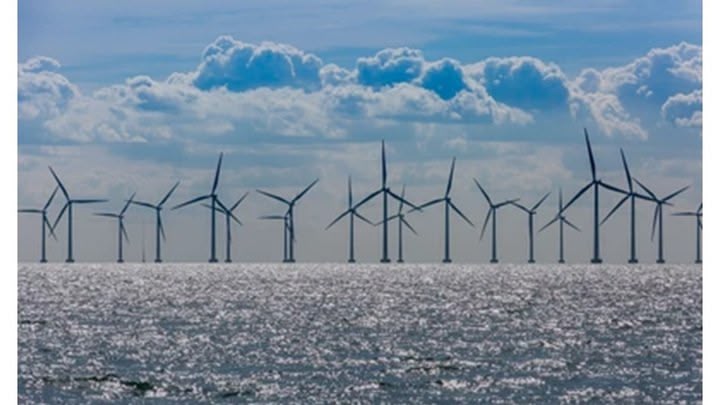Land use economics: would you rather live next door to a wind farm, a nuclear power plant, or a mobile home park? And will we even have a choice?
Photo above – the Park City Wind Farm, now under construction off the coast of Massachusetts. 260 square miles have been leased from the US government for this project.
America’s largest existing wind farm (by land use) is in Roscoe Texas. It uses 100,000 acres (150 square miles) and supplies 250,000 homes. (800 MW). 600 turbines. 4 turbines per square mile. See link below.
There are larger wind farms of course. Jiuquan Wind Power Base in China has 7,000 turbines. Ten times as large. In theory it could produce 20 gigawatts of electricity. But in reality it generates less than half that. Something to do with being stuck in the middle of the Gobi desert, thousands of miles away from where that electricity is actually needed. Transmission losses and what not. China is adding a new wind turbine EVERY HOUR. But their largest turbine just fell apart in a wind storm 6 months ago. They will need to replace that one, and it will probably it will take more than an hour. See 2nd link below.
This is not a rant against farmland loss in Roscoe Texas, or China building the planet’s tallest wind turbine, one which was visible from outer space. China also has most of world's largest nuclear power plants.
The USA last built a nuclear power plant (Watt’s Bar, Tennessee) 30 years ago. China built 13 in the last decade or so and has 3 more under construction. The United Kingdom has 4 plants, averaging 40 years old. Canada also has a couple, about 50 years old. Australia has none. Public input may play a role in where nuclear plants and wind farms and solar farms sprout up. At least in democracies.
The inspiration for today's column was a nuclear power advocacy group pointing out that you could power the entire city of New York on the nuclear fuel which would fit inside a 2 bedroom apartment. While the amount of land needed for the same wind turbine capacity to keep the lights on in NYC would be the size of 5 Roscoe Texas wind farms – about 800 square miles. The nuclear advocacy group did not say where the spent nuclear fuel rods would be stored, or how many years they would take to reach non-lethal radiation levels. Presumably even more land would be needed for the waste repository, which wasn't part of their sales pitch. Most people don’t want to live next to a nuclear waste dump either. And you can’t just toss those fuel rods in the ocean and hope they become an artificial reef, like everyone is doing with broken wind turbines.
Is solar the solution? Florida is retiring a cornfield near me to build a solar farm. It will use even more land than a wind turbine park, for the electrical same output. And people will probably still want to watch TV, charge their EVs, and keep the lights on after 5pm. But perhaps eat less corn?
What’s the point of today’s rant? It's that we - the entire world - has difficult problems, and no obvious solutions. Whatever we choose is going to mean someone is going to lose their minds over the location and environmental impact.
Unless we all want to live in places like the Gobi Desert.
I’m just sayin’ . . .
Top 10 Largest Wind Farms in the World: Nature's Power
'Two blades break off' world's most powerful wind turbine in China | Recharge
List of nuclear power stations - Wikipedia














